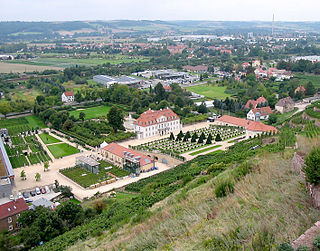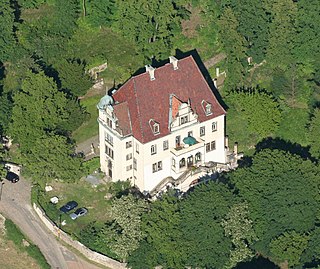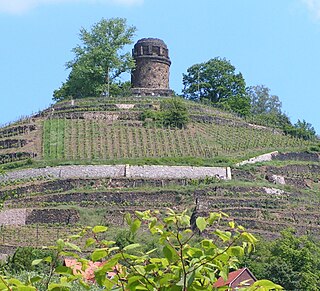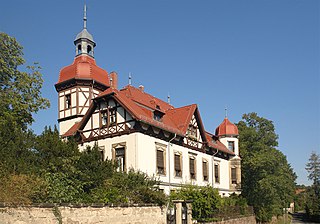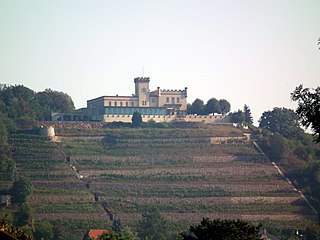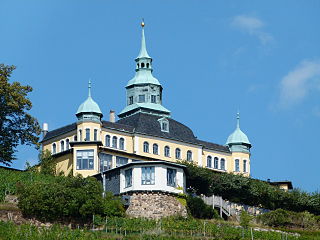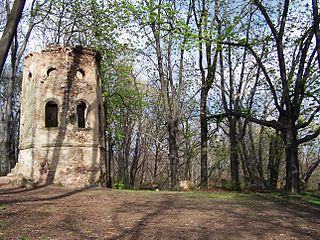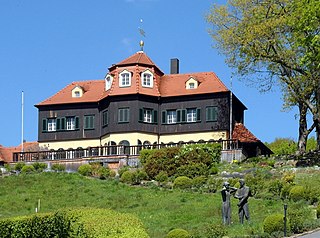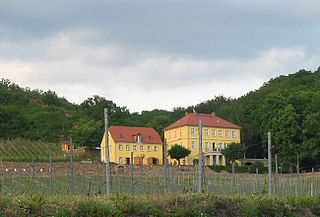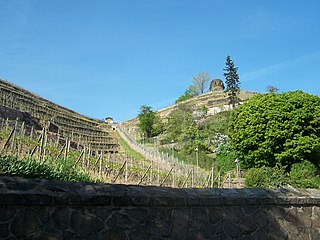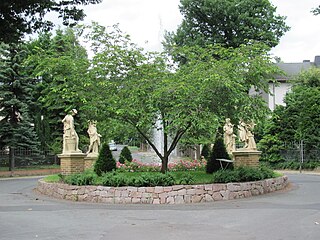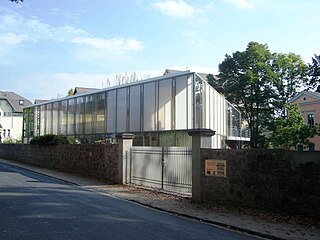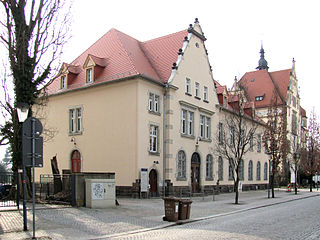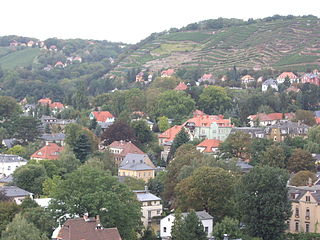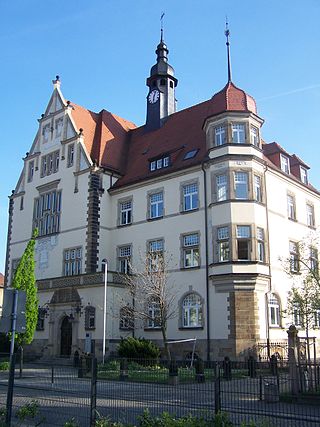27 Sights in Radebeul, Germany (with Map and Images)
Legend
Welcome to your journey through the most beautiful sights in Radebeul, Germany! Whether you want to discover the city's historical treasures or experience its modern highlights, you'll find everything your heart desires here. Be inspired by our selection and plan your unforgettable adventure in Radebeul. Dive into the diversity of this fascinating city and discover everything it has to offer.
Sightseeing Tours in Radebeul1. Schloss Wackerbarth
Wackerbarth Castle, originally Wackerbarth's Ruh', is a baroque castle surrounded by vineyards in the Radebeul district of Niederlößnitz on the road to Meißen, which serves as the seat of the Saxon State Winery. The winery belongs to the Radebeuler Johannisberg single vineyard within the Lößnitz vineyard and is located in the Radebeul historic vineyard landscape monument conservation area. The historic area of the castle forms an offshoot of the Lößnitz landscape conservation area above it.
2. Lutherkirche
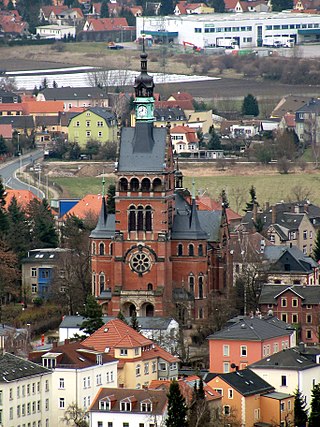
The Luther Church, formerly the Church of Radebeul, is an Evangelical Lutheran church on Meißner Straße in Radebeul-Ost, Saxony. The address is Kirchplatz 1, it is located between Meißner Straße 99 and 101. As one of the rare buildings in Radebeul with exposed brickwork, the Luther Church is also called the Red Church. The burial ground created for the parish at the same time as the church building is the cemetery in Radebeul-Ost, also known as the Luther Cemetery, about 700 meters away as the crow flies on the other side of the railway line.
3. Hohenhaus
Hohenhaus, until around 1830 Bischoffsberg, is a former vineyard property with a manor house in the Zitzschewig district of the Saxon town of Radebeul. The property, which was already listed in 1904 in Gurlitt's Art Monuments of Dresden's Surroundings, is located in the Radebeul Historic Vineyard Landscape Monument Conservation Area, and the monument protection also existed in GDR times. Hohenhaus is a "testimony to centuries of viticulture in the Lößnitz[,...] architectural, landscape design and regional history of importance".
4. Bismarckturm Radebeul
The Bismarck Tower in Radebeul, also known as the Bismarck Column, is one of about 145 Bismarck towers still existing in Germany in honor of Prince Otto von Bismarck (1815–1898). The Radebeul Tower was designed by Wilhelm Kreis as an individual design, built by master builder Alfred Große from Kötzschenbroda and inaugurated on 2 September 1907. It has a height of 18 meters.
5. Bilzburg
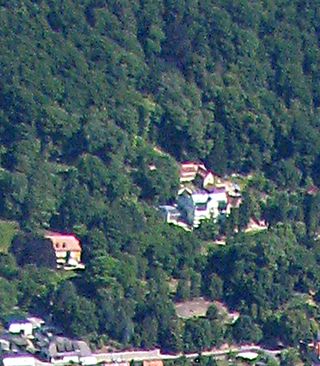
The Jägerberg is a former vineyard property in the Oberlößnitz district of Radebeul in Saxony, at Augustusweg 110, the vineyards above belong to Wahnsdorf, named after the vineyard name. In 1895, the Jägerberg became part of the Bilz Sanatorium, and Eduard Bilz also lived there privately. The property is located in the historic vineyard landscape of Radebeul and in the Lößnitz landscape conservation area, it is a "unique country estate, [...] important in terms of architectural history, art and landscape design".
6. Karl-May-Museum
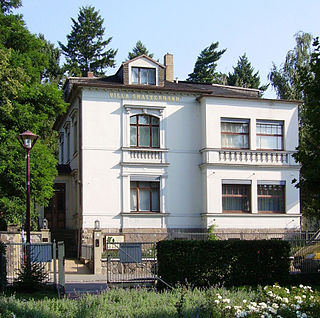
The Karl May Museum is a museum in Radebeul, Germany named after the German author Karl May, containing artifacts from May's life as well as a worldwide ethnographic and art collections with emphasis on the life on the American frontier and Native American life of that era. It is located in Villa Shatterhand, May's Italian Renaissance home, and Villa Bärenfett, a log cabin built in the garden that was the founding core of the museum. The main house was opened to the public after Klara May's death.
7. Krapenburg
The Krapenburg is a manor house in the high mountains of the Zitzschewiger Flur in the Saxon town of Radebeul with a vineyard located in the Radebeuler Johannisberg vineyard, the Krapenberg above. Both are located within the Radebeuler Lößnitz vineyard and belong to the Radebeul Historic Vineyard Landscape Conservation Area. The address is Mittlere Bergstraße 44, on the corner of Krapenbergweg, which is named after the vineyard. Further west on Mittlere Bergstraße is the Krapenberg winegrower's house at number 44a.
8. Wettinshöhe
The Wettinshöhe, in the 19th century Wettins Höhe, later also Wettinhöhe, is one of the steep-slope vineyards of the Radebeuler Johannisberg site. It is located in the Zitzschewig district of Radebeul in Saxony, at Auerweg 2/2a. On the hilltop is the listed Haus Wettinhöhe, a former mountain inn that was converted into a representative villa in the 19th century. The garden of the 24-hectare estate, which is located directly around the house, is considered a work of landscape and garden design, which is located in the Radebeul Historic Vineyard Landscape Conservation Area.
9. Friedensburg
The Friedensburg in the Saxon town of Radebeul is a former mountain inn used as a residential building on the edge of the slope above Niederlößnitz, at Obere Burgstraße 6. The silhouette of the Niederlößnitz vineyards is significantly shaped by the Friedensburg, together with the water tower standing a little to the west. The Friedensburg is located in the Radebeul Historic Vineyard Landscape Conservation Area.
10. Spitzhaus
The Spitzhaus is a former summer house in the Saxon town of Radebeul. The building, which can be seen from afar, is located on the edge of the slope of the Elbe valley basin above the Hoflößnitz in the Oberlößnitz district.
11. Blechburg
The Blechburg is a ruinous, former observation tower with a viewing bastion at the northern end of the Jägerberg on Wahnsdorfer Flur in the town of Radebeul in Saxony. The ruin stands in the middle of a forest that has developed in recent decades on the edge of the slope at about 235 m above sea level above the Villa Jägerberg at Augustusweg 110, belonging to the district of Oberlößnitz. The villa at the foot of the steep slope stands at 170 m, and the road is at the height of 158 m above sea level.
12. Mäuseturm
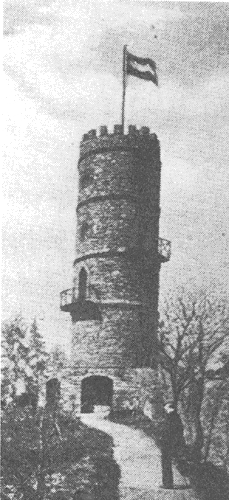
The Mäuseturm, also known as the Bilzturm, is a now collapsed observation tower on the edge of the slope above Lössnitz Castle in Radebeul, Saxony, where it forms the border with Oberlößnitz. The vantage point – from the edge of the slope – was already completely overgrown in 2008.
13. Wasserturm Radebeul
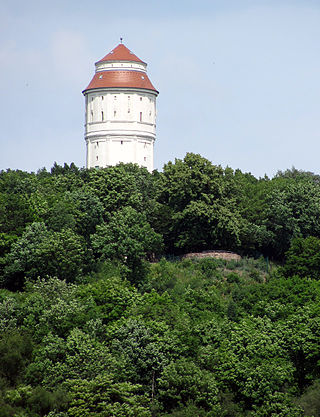
The white Radebeul Water Tower, also known as the Franzosenturm, which can be seen from afar on the edge of the slope in Radebeul-West, is a cultural monument that characterises the cityscape with its red conical roof. The address Am Wasserturm belongs to Kötzschenbroda Oberort and is located in the Radebeul Historic Vineyard Landscape Monument Conservation Area. The water tower is the only large structure in the Radebeul-West forest park. This, in turn, belongs to the Lößnitz landscape conservation area.
14. Haus in der Sonne
The Haus in der Sonne, formerly also Friedrichsburg and Bergschlösschen, is a vineyard house built in 1770 in the Oberlößnitz district of the Saxon town of Radebeul. The country estate, which has been a listed building since 1939, is located at Weinbergstraße 44, within the Radebeul Historic Vineyard Landscape Monument Conservation Area.
15. Zechstein
The former Zechstein winery with vineyard and forest property is located on Zitzschewiger Flur in the Saxon town of Radebeul, at Barkengasse 17. Today's two-storey manor house was built in 1852 on the site of a predecessor building mentioned in 1706. The Zechstein vineyard located above belongs to the Radebeuler Johannisberg vineyard within the Radebeuler Lößnitz vineyard. The Zechstein is located in the historic vineyard landscape of Radebeul, the monument protection already existed in GDR times.
16. Spitzhaustreppe
The Spitzhaustreppe is located in the Saxon town of Radebeul. It connects the Hoflößnitz winery with the Spitzhaus or the Bismarck Tower. The climb, including the shell pavilion at the top, is a listed building. The staircase is located in the historic vineyard landscape of Radebeul and is part of the monument preservation group as well as the listed vineyard landscape of the Hoflößnitz.
17. Fountainenplatz
Fontainenplatz, the square-like extension with the roundabout in Dr.-Schmincke-Allee, is located in the Serkowitz district of the Saxon city of Radebeul. It was laid out between 1890 and 1892 by Moritz Ziller, the older brother of the two Ziller brothers, as a decorative square, provided with a fountain and decorated with four life-size figures of the Ernst March company, the Four Seasons. Since the 2000s, the name has been used again, but is not officially dedicated as a street address.
18. Stadtgalerie Radebeul
The cultural smithy, a revised three -sided courtyard at Altkötzschenbroda 21, is on the north side of the Angers Altkötzschenbroda in the Kötzschenbroda district of the Saxon city of Radebeul. In the buildings renewed at the beginning of the 19th century, the municipal office for culture and tourism, in particular the art and cultural promotion with the Stadtgalerie Radebeul and the municipal art collection as well as the Heimatstube Kötzschenbroda, is located. Since there had been a smithy in the main building since the end of the 19th century, the building was given the name Kulturschmiede and the restaurant that was also there.
19. Kirche Christus König
The Church of Christ the King is located at Borstraße 11 in the Niederlößnitz district of the Saxon town of Radebeul. The Catholic church is an extraordinary building with an equilateral, triangular floor plan and glass walls. The church, designed by the architects Günter Behnisch and Gerald Staib, was consecrated on 25 November 2001.
20. Stadtverwaltung Radebeul
The former Radebeul post office, also known as the Alte Post, is located at Pestalozzistraße 4 in Radebeul's original district of Alt-Radebeul, directly east (left) next to the town hall. Today, the building houses parts of the Radebeul city administration with the Law and Order Office, in particular the registry office, which, together with the main office, are subordinate to the Second Mayor.
21. Charlotte Freund
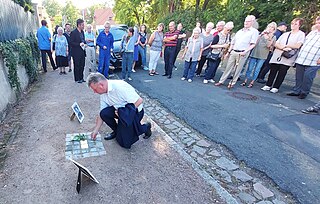
The list of stumbling stones in Radebeul contains all stumbling stones that were laid in the Saxon town of Radebeul as part of the art project of the same name by Gunter Demnig. Currently, stumbling stones lie in front of the Wettin House, Moritzburger Straße 1 in the Kötzschenbroda district, in front of the building of the Landesbühnen Sachsen and at Augustusweg 1. After the stones were laid for the first time in 2005, a second stumbling stone was laid on 17 June 2024 on the initiative of the Radebeul Historical Society together with pupils of the Lößnitzgymnasium with the Lord Mayor Bert Wendsche. Ten stumbling stones in Radebeul now commemorate the victims of National Socialism. The stumbling stones handed over in Villa Wach are to be laid after completion of the construction work.
22. Talutanlage
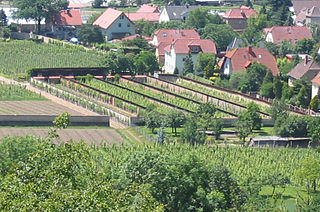
The talutanlage on the Krapenberg vineyard in the Radebeul district of Zitzschewig is a talut complex consisting of six talut walls with five quarters for the weather-protected cultivation of table grapes. The listed facility is located at Kynastweg 2 and belongs to the Radebeuler Johannisberg vineyard. Like the surrounding vineyards of the Krapenberg and the neighbouring Kynast, the Talutanlage is located in the Radebeul Historic Vineyard Landscape Conservation Area.
23. Trafoturm Radebeul
The so-called transformer tower on the corner of Meißner Straße / Einsteinstraße in the Saxon city of Radebeul is a former transformer station. The listed building dates back to around 1910 and is right next to it the hotel and restaurant "Zu den Linden" by Radebeul confectioner and specialist author Erich Weber.
24. Historische Weinberglandschaft Radebeul
The historic vineyard landscape of Radebeul is a monument protection area according to § 21 of the Saxon Monument Protection Act. It is part of the Saxon town of Radebeul and is therefore located in the Elbe landscape of Lößnitz. The cultural landscape, which stretches along the Radebeul steep slopes, largely overlaps with the Radebeuler Lößnitz vineyard as well as with the Lößnitz landscape conservation area.
25. Heimkehrerstein
The Heimkehrerstein is a memorial stone in Radebeul of three veterans of the Franco-German War of 1870/71. It is located in the Seewiesen at the entrance to Alt-Radebeul, coming from Dresden-Kaditz, on Kaditzer Straße.
26. Birkenhof
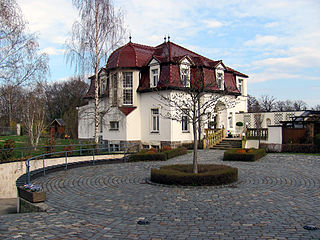
The Birkenhof, a villa estate on a former vineyard property in the Oberlößnitz, is located at Spitzhausstraße 28 in the Saxon town of Radebeul, separated from the Spitzhaus only by a bend in the road. The building, which was built in 1910, and the property were extensively redesigned in the 1920s by the Chemnitz architect and building councillor Friedrich Wagner-Poltrock.
27. Rathaus Radebeul
The town hall is located at Pestalozzistraße 6 in Radebeul, in the courtyard is the former police building. The town hall is the seat of the mayor of Radebeul, and on the second floor there is also the "remarkable[...] Festival or council chamber with mural" of the city. The building is "significant in terms of architectural history and local history as well as artistically".
Share
Disclaimer Please be aware of your surroundings and do not enter private property. We are not liable for any damages that occur during the tours.
